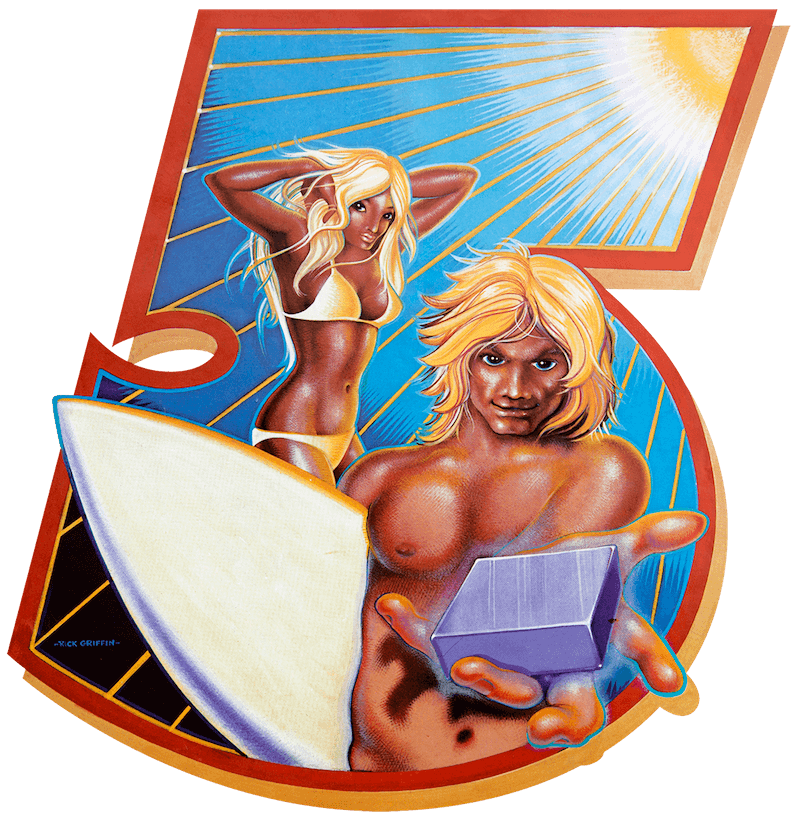A Recollection by Greg MacGillivray
March 24, 1972 was the most amazing night I’ve ever experienced. The Santa Monica Civic Auditorium had been transformed into a time capsule designed to take surfers back to the late ’50s. There were surfboard booths, bikini displays, surfing magazines for sale; it was a flashback to the Surf-o-Rama days of the longboard era. We wanted it to be an all-time party to remember. Honk was on stage blasting out surf music over an incredible state-of-the-art sound system and every top surfer was there; the energy was like a Surfer Poll banquet with 10 times the number of people.
Mickey Dora showed up in a trench boat, collar raised, hat pulled low to avoid detection. He came to the ticket window my girlfriend was operating, and asked furtively if the tickets we sent him were good for the event. Barbara recognized him and said, “Of course, Mickey, we’re glad you’re here.” Concerned that he’d been identified, Dora snuck off into the theater and sat in front of SURFER Magazine’s Brad Barrett (an event Brad remembers vividly and cherishes to this day).
The surfing world had been primed for Five Summer Stories for more than a year; everyone knew this was MacGillivray Freeman’s last surfing film, and they were pumped and ready for it. The event was sold out, yet the audience kept coming. A counterfeiter was reported a block down on Ocean Avenue, selling fake tickets at half price. We sent two beefy surfers to run the guy off, but at least 500 people had gotten in with bogus tickets. People were seated in the aisles, on the stairs, standing along the back. The auditorium manager went berserk. The Fire Marshall could shut him down. Every nook and cranny was full–no one could move. It all added to the intensity.
The huge crowd had arrived early, so by showtime the energy was so heightened and thick you could taste it. Then we started the film, and they started screaming, and they never stopped. One long opening shot played perfectly: Sam Hawk dropping into that huge 25-foot wave at Outside Pipeline, dropping and dropping and dropping, and then at the bottom he lays down a radical turn and carves back up the entire face of the wave and finally gets pitched over the falls, The crowd went crazy! The screams and hoots broke the decibel barrier! It was such a bitchin’ way to kick off the movie, and it just kept going from there.
Part of the film’s success had to do with the times. It was the crossroads where the ’60s met the ’70s. Vietnam, politics, protests, kids pushing limits all over the map. It was a rare situation that was heightened for Jim and me, knowing it was our final surfing movie. After making two general-audience surfing films fot he big screen–Waves of Change and Sunshine Sea–we wanted to make one last film for surfers. This was a farewell that we really put our hearts into. The film and its messages were two things we felt strongly about, and we wanted the film to turn out right for the surfers–as a farewell salute to a sport we loved.
When you came down to it, for us, I think the real fun of it was not knowing how the surfers were going to react. Hearing their reaction that night was energizing; it made all the seemingly endless hard work worthwhile.
Even after Jim died, I vividly remember sitting in the corner of a theater, and the film still had the same magic for me–the music, the rhythms of the editing, the words. Everything clicked together. Five Summer Stories is an experience more than it is any particular story, or message. It reflects a tumultuous era–and distills those complex times into the simple relationship of man and ocean.
